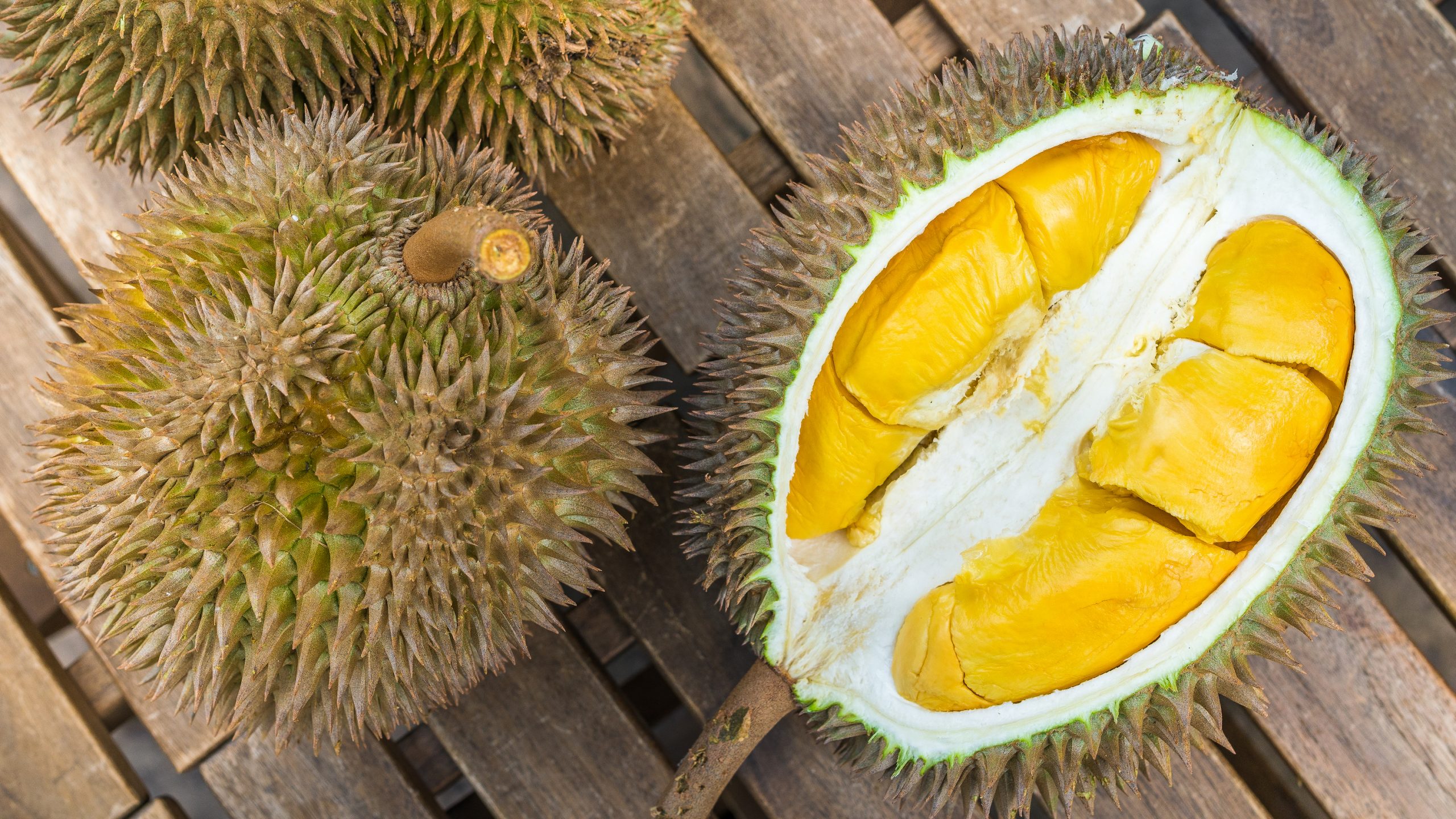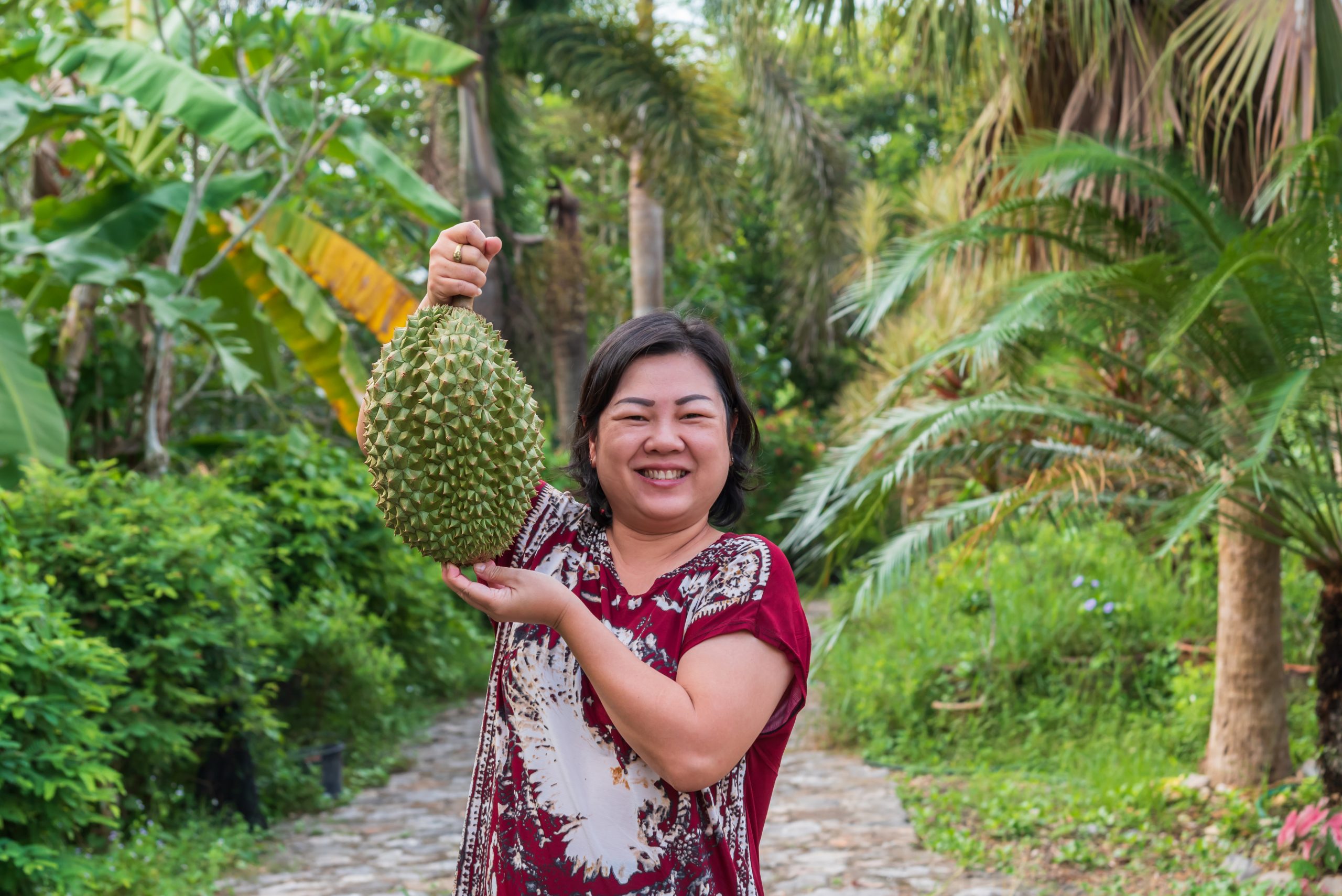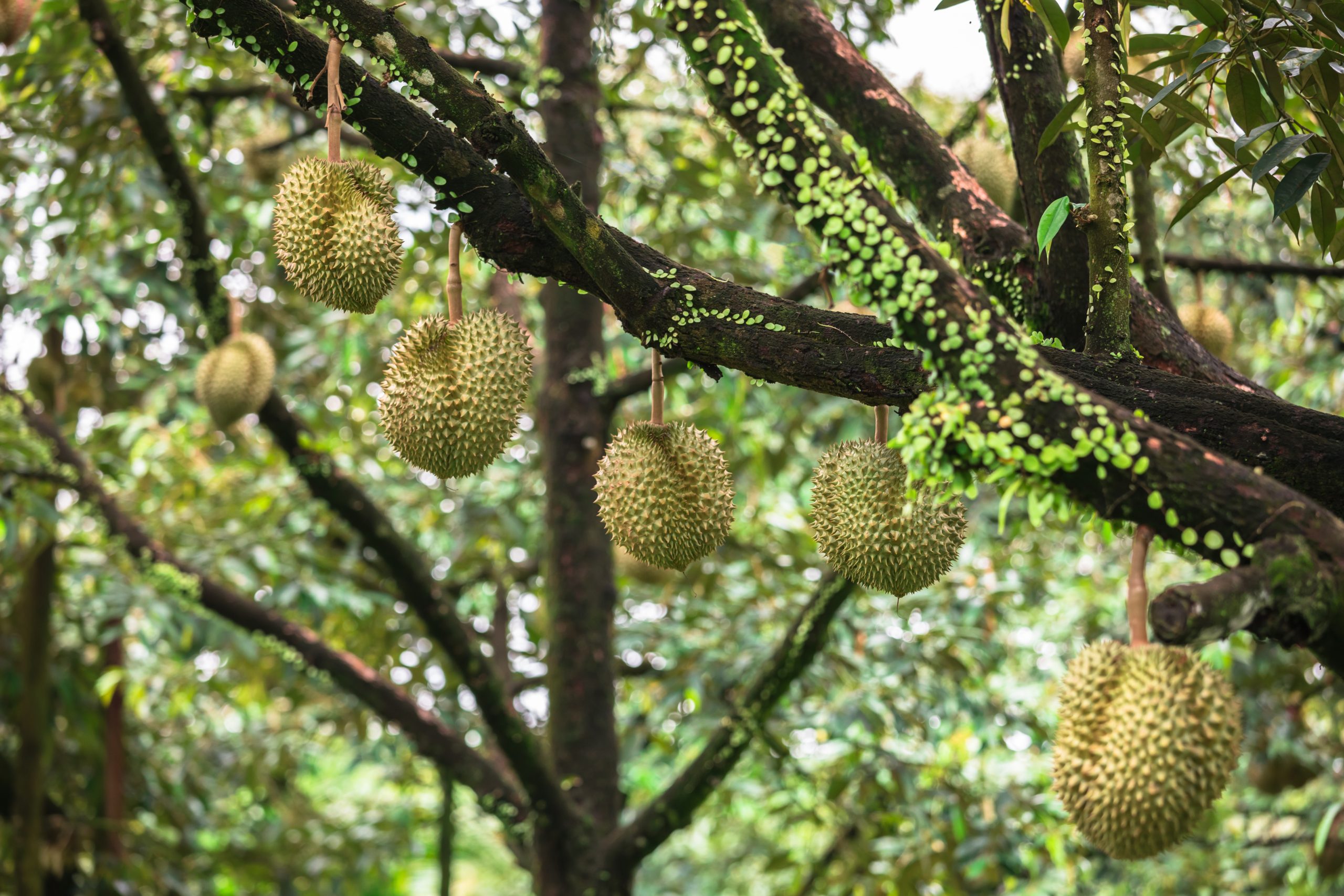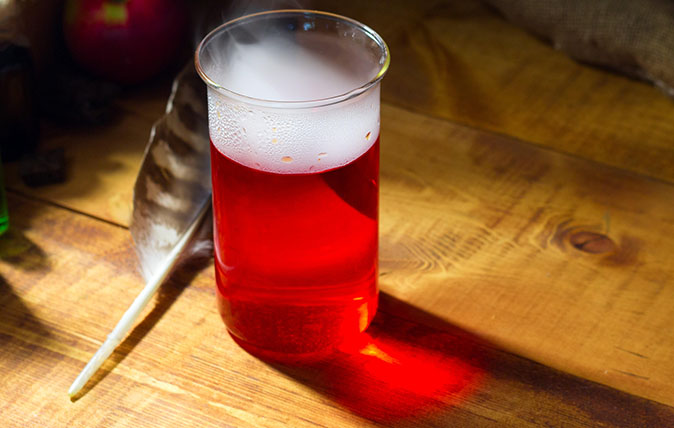Curious Question: Could the world’s smelliest fruit soon charge your phone?
Martin Fone dives into the world of pongy fruits and discovers why durian could be at the charging end of your mobile's battery.


Looking like a cross between a pineapple and a cantaloupe, with a prickly outer skin that demands careful handling, the durian is highly prized as a delicacy in its native Brunei, Indonesia, and Malaysia.
There are thirty recognised species of the genus Durio and the tall evergreen trees regularly top one hundred feet. Fruiting once or twice a year, they take three months after pollination to produce a ripe fruit. It is easy to see why, as the fruit is no shrinking violet, weighing up between two and seven pounds and measuring a foot in width, with brown or green husks and pale yellow or red flesh, depending upon the particular species.
The fruit has recently exploded in popularity in China, so much so that in order to meet the growing demand, durian growers in Thailand and Malaysia are eschewing the traditional small orchards in favour of industrial-scale operations, clearing rain forests to do so and putting even more pressure on an already fragile eco-system.
In 2019, the durian had replaced the cherry as China’s top imported fruit and the demand shows no sign of slowing down. In the first half of 2020, imports of the fruit to China had topped $1.62 billion, a 75% year-on-year increase on 2019.
Top of the Chinese shopping list is the Musang King, noted for its thick, golden flesh, which can sell in Beijing for around 800 yuan (£100) for a single fruit. They are left to ripen naturally on the tree and are collected in large nets when they fall and vacuum-packed immediately to preserve their ripeness. The fruit has a custardy texture and is often used to add flavour to rice dishes or as a pizza topping.

Proponents of the durian point out that it is packed with antioxidants and rich in potassium, iron and vitamins B and C, making it ideal for lowering blood pressure, and improving skin texture and muscle strength.
Containing 23 grams of dietary fibre, a single fruit is sufficient to meet our daily nutritional requirements. Superfruit it may be, but the durian stands out in another respect: the aroma that accompanies it.
Exquisite houses, the beauty of Nature, and how to get the most from your life, straight to your inbox.
Smell is one of the most subjective of senses — curiously there is no commonly accepted metric for describing or rating smells — and the durian is the Marmite of fruits.
Some think that it has a pleasantly sweet fragrance while others, the majority, certainly among Occidentals, think that it has an overpowering and deeply unpleasant odour that lingers for days.
So Far East Asia's ‘king of the fruits’ has also earned itself the sobriquet of the world’s smelliest fruit. So offensive is the smell to many that it is banned on buses, trains, planes and many public spaces across Singapore, Thailand, Japan, and Hong Kong.
Taxi drivers will refuse you entry into their cab if you are carrying one and hotels display signs advising their clientele ‘No Durian Allowed’. It is, nonetheless, the official Singaporean fruit and has left its mark on the city’s skyscape, the Esplanada building, adjacent to the city’s Marina Bay, resembling a durian cut in half.

Durians have been known to cause havoc. An Indonesian plane was grounded in November 2018 because the passengers complained of the stench emanating from a consignment of durians in the hold.
A suspected gas leak resulting in the evacuation of the library at the University of Canberra in 2019 turned out, after a thorough search by the Fire Brigade, to be the odour from a half-eaten durian left close to an air vent.
In Germany in June 2020, the smell from a parcel in a post office in Schweinfurt was so overpowering that twelve postal workers were treated for nausea, with six requiring to be taken to the hospital. The source was a consignment of four durians which someone, perhaps thoughtfully, was sending to a friend in Nuremberg.
It is not surprising that so divisive a fruit has split opinions among those who have ought to describe its taste and smell. A 17th-century missionary, Jacques de Bourges, was an advocate; ‘the flesh is as white as snow, exceeds in delicacy and taste of all our best European fruits, and none of ours can approach it’.
French naturalist Henri Mahout took a little time to appreciate the durian’s qualities: ‘on first tasting it, I thought it like the flesh of some animal in a state of putrefaction, but after four or five trials I found the aroma exquisite’. Mahout never returned to his native France, but it was jungle fever rather than the durian that ended his travels prematurely in 1861.
As befits a poet, Bayard Taylor was more succinct; ‘to eat it seems to be the sacrifice of self-respect’. Perhaps the fairest summation was penned by Italian explorer Giovanni Battista Cerruti in his My Friends the Savages (1908): ‘I have never tasted anything more delicious. But not everyone can enjoy or appreciate this strange fruit for the disgusting smell that distinguishes it and that is apt to cause nausea to a weak stomach. Imagine to have under your nose a heap of rotten onion and you will still have but a faint idea of the insupportable odour which emanates from these trees and when its fruit is opened the offensive smell becomes even stronger’.

Aside from taste and smell, the durian falls foul of those who, in these more environmentally aware times, are concerned with food waste. Around 70% of the fruit is discarded because it is inedible. This shockingly high level of waste led a team of chemical engineers from the University of Sydney, headed by Vincent Gomes, to consider whether the inedible parts could be deployed in another way.
Their principal objective was to find an alternative source to power mobile devices, given that the lithium-ion battery, so favoured by manufacturers, loses its ability to hold a charge over time, is inefficient in extreme weather conditions and the mining activities associated with its production come with a high social and environmental cost.
Could the inedible parts of the durian, together with that of another Asiatic favourite, the jackfruit, be turned into a super-capacitor, a type of reservoir that charged and discharged energy?
By heating, freeze-drying and baking the inedible, spongey core of the fruits in an oven at a temperature of more than 1500C, they produced a black, highly porous, ultra-light structure, which they moulded into electrodes for a low-cost super-capacitor.
The resulting product could be charged up in just thirty seconds and was able to power up a range of electronic devices, including mobile phones, tablets, and laptops, in just a few minutes. Mr Gomes and his team may just have found a new and sustainable way to store energy for domestic use. If it does come to fruition, it is no thanks to Mr Gomes’ wife. Having taken the risky step of using his home freezer to store the fruit, perhaps he should not have been too surprised when she, finding the stench emanating from them too offensive, cleared them out. Being married to an inventor is no bowl of cherries, it would seem.

Curious Questions: Do love potions actually work?
The idea of a potion that can make someone fall in love is as old as the idea of love

Curious Questions: Why do clocks go clockwise?
There's nothing to stop the hands of a clock from running backwards — indeed, some actually do — but the overwhelming majority
After graduating in Classics from Trinity College Cambridge and a 38 year career in the financial services sector in the City of London, Martin Fone started blogging and writing on a freelance basis as he slipped into retirement. He has developed a fearless passion for investigating the quirks and oddities of life and discovering the answers to questions most of us never even think to ask. A voracious reader, a keen but distinctly amateur gardener, and a gin enthusiast, Martin lives with his wife in Surrey. He has written five books, the latest of which is More Curious Questions.
